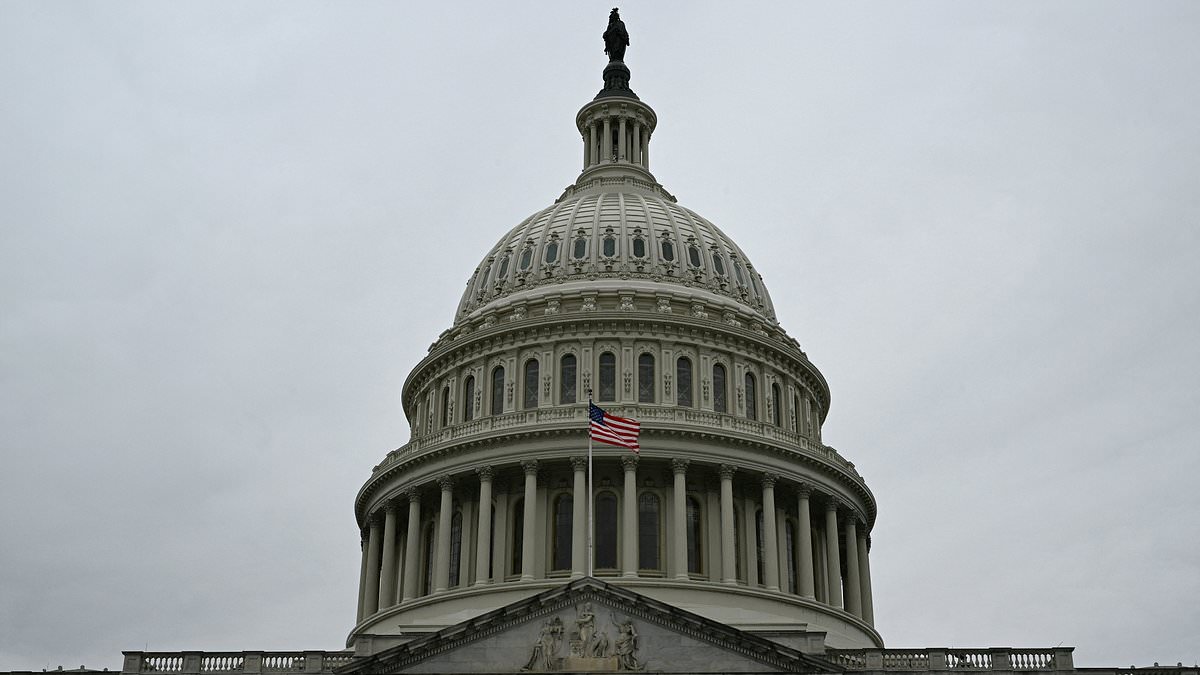Donald Trump ran up the national debt by almost twice as much as Joe Biden has during his presidential term, according to fresh analysis of their fiscal spending.
Former President Trump approved $8.4 trillion of new 10-year borrowing during his full term in office, according to a nonpartisan public policy think tank.
Meanwhile, President Biden has given the green light to $4.3 trillion of the same type of borrowing with seven months remaining in his term.
Even when excluding pandemic-era relief spending from the tally, Trump still contributed more to the national debt while in office, the report found.
The winner of November’s presidential election faces a grim fiscal outlook, with the national debt on course to reach a record share of the economy under the next administration.
The debt passed over the $34 trillion mark at the beginning of this year, and is poised to top $56 trillion by 2034, according to projections earlier this month.

Former President Trump approved $8.4 trillion of new 10-year borrowing during his full term in office
Read More
Millions of Americans could see their Social Security retirement payments cut by $300 a month

The report by the non-profit organization, the Committee for a Responsible Federal Budget, points out that both candidates bear a share of the responsibility for adding substantial amounts of new borrowing in their first term.
However it found Trump’s spending was much higher – thanks in part to the significant tax reform he introduced in 2017.
Aside from Covid relief, Trump added $4.8 trillion in borrowing over a ten-year window.
His biggest additions to the debt were the tax cuts, which added $1.9 trillion in additional borrowing, and bipartisan spending packages which added $2.1 trillion.
Trump added $3.6 trillion in Covid relief, the analysis shows, including $1.9 trillion with the CARES Act brought in at the start of the pandemic in March 2020.
Biden, meanwhile, has added $2.2 trillion in non-Covid spending in the three years and five months since he took up office.
This has been made up of 2022 and 2023 spending bills – which added $1.4 trillion – student debt relief programs – which added $620 billion in debt – and changes to SNAP benefits and Medicaid.
In terms of Covid relief, the President added $2.1 trillion in debt through his American Rescue Plan Act, which gave a slew of funding to state and local governments, health care providers and public health agencies.
According to the analysis, roughly 77 percent of Trump’s approved 10-year debt came from bipartisan legislation, while 29 percent of the ten-year debt President Biden has approved thus far came from bipartisan legislation.
‘The next president will face huge fiscal challenges,’ Maya MacGuineas, the president of the fiscal watchdog, told Axios.
‘Yet both candidates have track records of approving trillions in new borrowing even setting aside the justified borrowing for COVID, and neither has proposed a comprehensive and credible plan to get the debt under control,’ she said.
‘No president is fully responsible for the fiscal challenges that come along, but they need to use the bully pulpit to set the stage for making some hard choices.’
Warnings from non-profit organizations and economists about the impact of soaring debt on the US economy are growing louder as the election approaches.

Donald Trump ran up the national debt by almost twice as much as Joe Biden has during his presidential term, according to fresh analysis of their fiscal spending

The national debt crossed over the $34 trillion mark at the beginning of this year
Federal debt is at a historic high, and interest payments on this debt are now the fastest growing part of the federal budget, according to the Congressional Budget Office.
Interest payments jumped above Medicaid last year, and will rise above defense and Medicare later this year. The former is health coverage for people with limited income, and the latter is mostly for over-65s.
It means by the end of 2024, interest payments will be the second largest government expenditure. Only Social Security will be a bigger cost.
The Social Security trust fund is also heading toward depletion in 2033, when just 79 percent of scheduled benefits would be payable.
If Congress does not ensure these programs have the resources to continue paying full benefits, this would mean millions of Americans would see their monthly benefits cut.
Earlier this year legendary hedge fund manager Paul Tudor Jones said that a ‘debt bomb’ is on the verge of exploding in the US – due to ‘unsustainable’ government borrowing.
The billionaire investor said that the economy appears strong – but under the surface it is actually on ‘steroids’ that are masking major problems.
